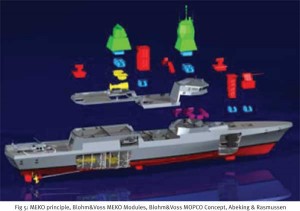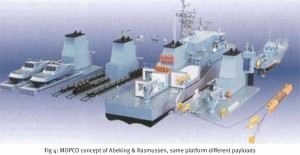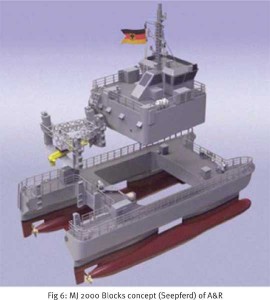Designers of video games of the late 1970’s like Space Invaders, were the first to prove the versatility of the concept of large scale Modular design and construction when applied to space warfare in real time using computers. As processors became more powerful, newer games became even more complex. A mother ship could now seamlessly remove or patch on Modules for defense, attack, command and control, power, fuel etc. Many of these were developed independent of the main franchise. Rival players of Star Trek were able to load Modules of their choice to optimize their chosen strategies which made the game even more interesting. It should always be remembered that a Module is an independent assembly of engineering hardware and software to perform a given function given a set of design inputs and constraints. With the construction in space of the International space station, Modular design, construction and assembly is now a reality that captivates all of us.
All living beings come into existence through natures principle of Modular design and building. We are all built from a single embryonic stem cell. That cell contained within the inner layer of the blastocyst has the ability to replicate itself or transform themselves to specialized cells for specific body parts like the liver, the eye, bones etc. It should be remembered that a typical cell weighs 1 nano gram and is 1 uM long. Within that cell, there are thirteen distinct bio-systems; all alive and in communication with each other based on enzymes and histones internally and externally. The DNA, the RNA and the Epigenes are the instruction set in each cell. There is much to be learnt from the simplicity used by nature the Master Builder that has produced many billions of different humans. It provides great reliability, is cheap and repetitive. It always starts off with an inventory or catalogue of all the basic structures it needs before it proceeds further.
Likewise, the Modular design and construction of Warships too requires certain basics. These are:
- A common base catalog of information that can be used repeatedly throughout the industry. Currently, this does not exist.
- Two or more specialist Module designers who have the required expertise and experience in certain types of Modules.
- Platform designers who can interface with the Module designers to create the ship.
- Module builders who specialize in building the Modules designed and can deliver the same to the Assembly yard either as standalone modules or assembled into Blocks that contain adjacent Modules also built nearby.
- The Assembly Shipyard is the Yard who principally stores and assembles the Modules or Blocks supplied by others but also has the capacity to participate in the design and building of certain Modules or Blocks if required.
- A standalone fully independent project Office who manages the project which includes the Module designers, the Platform designers, the Module builders and the Platform assembly yard. In addition, it should conduct all inspections, tests trials, delivery and post delivery. It is recommended that this Office be also exclusively responsible for configuration management and the cost of each ship of the class on a womb to tomb basis.
 Like in nature, it is absolutely necessary to first establish an electronic Common Base Catalog (CBC) of all Objects to be used. The Objects, using a top down approach from the base Platform, are its systems, subsystems and components inclusive of their dependency and inter relationship with other Objects. The development of a structured catalog though time intensive initially, in conjunction with CAD drastically reduces the time spent on Module and Platform design. The compilation of the CBC is no easy task. Nevertheless, being the world’s leader in software applications, such a task is well within the nation’s capacity. In brief, the CBC will have in electronic format every Specification, drawing, technical data, operations, maintenance, end of life disposal instructions and costing data pertaining to any item used in shipbuilding and relevant to other items during its life. The creation of a CBC could take upto four years as it involves creating a hierarchy of classes containing over twenty million objects each having nearly a hundred and fifty attributes. In addition, many of these objects have to be linked thru interfaces and mapping functions to other data sets such as their supply chain sources, handling & logistics, warehousing requirements, maintenance and disposal etc. The data set must also include all inspection, tests and trials including applicable vibration, noise, shock, thermal, radar imaging and ashore trials required. These have to be jointly established and agreed to by all concerned partners such as the Platform, Module designers, Module Builders, Ship builders and suppliers.
Like in nature, it is absolutely necessary to first establish an electronic Common Base Catalog (CBC) of all Objects to be used. The Objects, using a top down approach from the base Platform, are its systems, subsystems and components inclusive of their dependency and inter relationship with other Objects. The development of a structured catalog though time intensive initially, in conjunction with CAD drastically reduces the time spent on Module and Platform design. The compilation of the CBC is no easy task. Nevertheless, being the world’s leader in software applications, such a task is well within the nation’s capacity. In brief, the CBC will have in electronic format every Specification, drawing, technical data, operations, maintenance, end of life disposal instructions and costing data pertaining to any item used in shipbuilding and relevant to other items during its life. The creation of a CBC could take upto four years as it involves creating a hierarchy of classes containing over twenty million objects each having nearly a hundred and fifty attributes. In addition, many of these objects have to be linked thru interfaces and mapping functions to other data sets such as their supply chain sources, handling & logistics, warehousing requirements, maintenance and disposal etc. The data set must also include all inspection, tests and trials including applicable vibration, noise, shock, thermal, radar imaging and ashore trials required. These have to be jointly established and agreed to by all concerned partners such as the Platform, Module designers, Module Builders, Ship builders and suppliers.
 With a CBC in place, it now becomes practical for designers to specialize either in the design of a particular type of Module such Command and Control, Weapons or Main Propulsion etc. or in creating the Platform from a steady stream of Modules designed and supplied by others in coordination with the Platform design. In turn, Builders too are either specialist in the building of particular types of Modules or Platform assembly specialists. Every designer of a Platform or a Module and every Builder who assembles the Modules to build the Platform will rely and be bound by the CBC. The “Read” only version of the CBC should be made available to all authorized naval builders and selectively to concerned and authorized Defense contractors through encrypted secure high speed fiber optic video communication. With a CBC, it is practical to instantly make and present various variations at sub system, system or Platform level as demanded by a customer complete with costs and other implications. The gains made by this standardization will be enormous for the Industry and the Navy. The daily auditing, upkeep and correctness of the CBC will require a full time team of high level dedicated specialist Engineers, Information Scientists and encryption experts.
With a CBC in place, it now becomes practical for designers to specialize either in the design of a particular type of Module such Command and Control, Weapons or Main Propulsion etc. or in creating the Platform from a steady stream of Modules designed and supplied by others in coordination with the Platform design. In turn, Builders too are either specialist in the building of particular types of Modules or Platform assembly specialists. Every designer of a Platform or a Module and every Builder who assembles the Modules to build the Platform will rely and be bound by the CBC. The “Read” only version of the CBC should be made available to all authorized naval builders and selectively to concerned and authorized Defense contractors through encrypted secure high speed fiber optic video communication. With a CBC, it is practical to instantly make and present various variations at sub system, system or Platform level as demanded by a customer complete with costs and other implications. The gains made by this standardization will be enormous for the Industry and the Navy. The daily auditing, upkeep and correctness of the CBC will require a full time team of high level dedicated specialist Engineers, Information Scientists and encryption experts.




